5. Notes on a Scandal (2006)
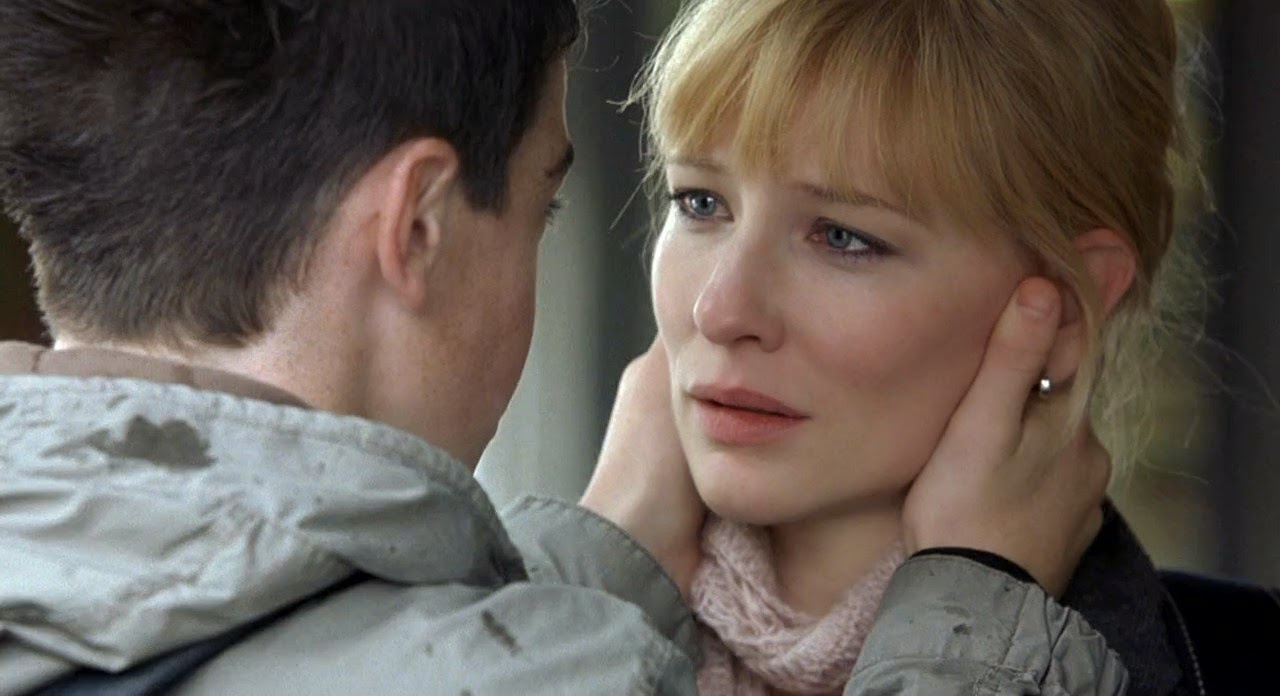
Before I watched this film, I hadn’t seen the trailer, nor did I know anything about the plot. All I knew was that it stars Judi Dench and Cate Blanchett, and that the screenplay is written by Patrick Marber (who also wrote “Closer”).
This was enough for me to consider it worth a watch. “Notes on a Scandal” has so many twists and turns that the best way to watch it is probably the way I did – jump right in and let the film surprise you. For a little more spoiler-free information, and to know why it features on this list, read on.
Directed by Richard Eyre, this British psychological thriller is an intense story about loneliness and the great lengths one could go to satisfy their desires. Barbara (Judi Dench), the film’s narrator, is an aging sharp-tongued school teacher who is spiteful of everyone around her, barring the cat she shares her home with.
Through her narrated journal entries, we know that she is also incredibly lonely and sexually frustrated – “so chronically untouched that the accidental brush of a bus conductor’s hand sends a jolt of longing straight to your groin.” Fueled by this loneliness, when Barbara develops a crush on new teacher Sheba (Cate Blanchett), she makes it her mission to make Sheba her ‘best friend’. To have what she wants, she has the perfect weapon – a sensational secret from Sheba’s sex life.
The sensuality of this film arises purely from Sheba and Barbara’s desperate longing for her. When Sheba joins the school, Barbara tells us, “She’s certainly caused some ripples in our stagnant pond.” Blanchett, and the director’s visualization of Sheba, make us see why she’d have that effect. Sheba is charming, beautiful, and incredibly sexy.
Whether she’s casually flicking her hair, swaying her long torso to music, or arching her neck in a moment of sexual rapture, Sheba is sensuality personified.
4. The Handmaiden (2016)
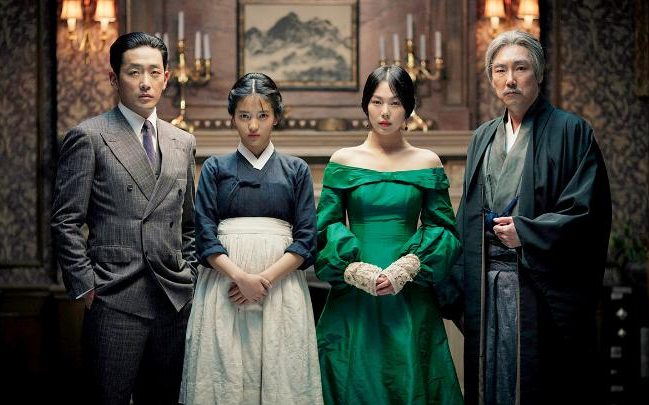
The most recent movie on this list, “The Handmaiden” is a South Korean erotic psychological thriller directed by Park Chan-wook. It is set in 1930s’ Japan-occupied Korea where a spirited pickpocket named Sook-Hee (Kim Tae-ri) is hired by a conman (Ha Jung-woo), posing as Japanese fake count Fujiwara, to work as a maid at the estate of a rich vintage book collector (Lee Yong-nyeo). Sook-Hee’s duties involve waiting hand and foot on the collector’s deceased wife’s Japanese niece, Lady Hideko (Kim Min-hee), who he has practically held prisoner since childhood.
Fujiwara plans to marry Lady Hideko, have her committed to a mental asylum, and claim her inheritance. Sook-Hee is expected to keep an eye on the lady and make sure Fujiwara’s scheme goes per plan. Things get complicated, however, when Sook-Hee falls in love with the heiress. What follows is a densely-plotted story of intrigue and backstabbing narrated in three parts, each from the perspective of a different character.
When Sook-Hee arrives at the estate, she takes on the role of a mother to the delicate Lady Hideko. She feeds her, dresses her, comforts her, and sings to her in the middle of the night when Hideko wakes up screaming from her nightmares. Through moments as unexpectedly sensuous (and usually, laughingly amusing) as when Sook-Hee uses her thimbled finger to rub Hideko’s sharp tooth in the bath, this mother-child relationship slowly transitions into a blossoming romance.
Each of these moments are carefully observed – whether it’s when the two women lock eyes across a distance, when they gently unlace each other as they play dress-up, or when they begin their gasping journey of sexual discovery.
Every aspect of “The Handmaiden” is strikingly beautiful. The use of texture and colour – be it in the flowing satin adorning Hideko, in the bright moon against the dark night sky, in the Japanese architecture of the book collector’s estate, or in the calligraphy on books and scrolls – it’s spellbinding.
The film is a special treat when it takes on a surreal quality. One of the wonderfully filmed and choreographed scenes involves a reading of an erotic piece from the book collector’s house. It’s perverse and eerie, but also visually delightful.
3. Lady Chatterley (2006)
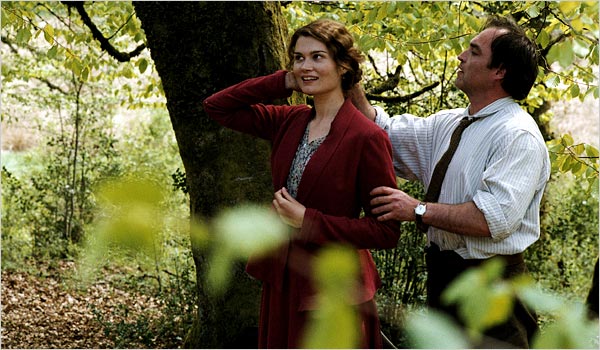
“Lady Chatterley” is the French adaptation of a lesser-known version of D.H. Lawrence’s controversial “Lady Chatterley’s Lover” (1928). Directed by Pascale Ferran, the film explores the transformation of sex in a relationship between two individuals across the class divide.
The young Lady Connie Chatterley (Marina Hands) is married to a wealthy baronet who was paralyzed from the waist down in World War I. On one of her errands, she sees the gamekeeper, Parkin (Jean-Louis Coulloc’h), sponging himself bare-chested and finds herself aroused. Presumably with little sexual experience due to her impotent husband, this may have been the seed for a sexual awakening in Connie. She begins going on regular walks through the forest and stops at Parkin’s hut to rest.
Though the two barely speak to each other, they seem to find comfort in each other’s company, the nature around them, and in their isolation. One day, in a moment of vulnerability, the sexual undercurrents finally give way and the couple make love in Parkin’s hut.
The consummation of the relationship marks the beginning of their affair and Connie’s sexual education. Through the numerous graphic sex scenes, the film traces the progression of sex as it moves from being a mere subject of curiosity and an outlet of libidinal energy, to a mode of self-discovery, love, and transcendence.
“Lady Chatterley” takes its time showcasing nature – daffodils, sparkling brooks, trees, drifting clouds, the full moon – all gorgeously shot. These montages seem like a necessary backdrop for the transcendent climax of Connie and Parkin’s relationship where the two blissfully run around naked in the rain and make love on the ground.
Parkin stirs in Connie the desire to explore her physicality; Connie inspires Parkin to embrace the sensuality of the world around them. The film is nearly three hours long and has little dialogue; the pace of the film may, therefore, be considered languid. However, one can also interpret it as the director’s message, asking us to ‘stop and smell the flowers’ – the only way we can fully experience our sensuality.
2. Perfume: The Story of a Murderer (2006)
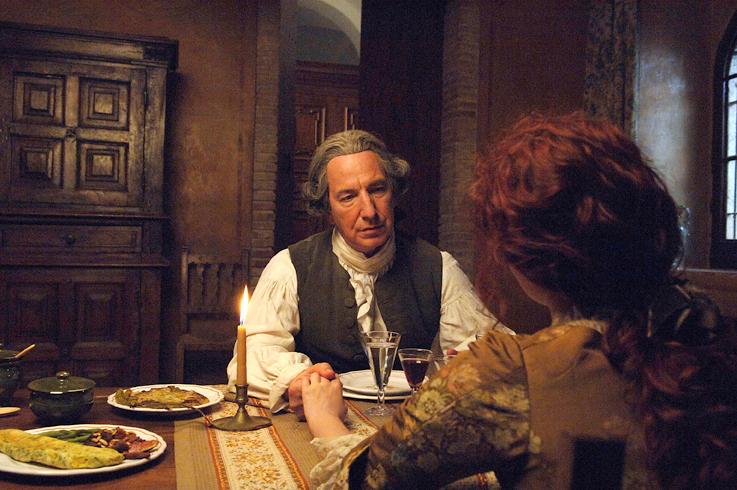
Directed by Tom Tykwer, “Perfume” is possibly one of the most daring movies ever made. You’d love it or hate it, but you’d never forget it.
This fantasy thriller film, based on a 1985 novel by Patrick Suskind, explores a man’s all-consuming obsession that leads him to the gallows. The man in question is Jean-Baptiste Grenouille (Ben Whishaw), an olfactory genius who can detect smells from miles away and expertly distinguish them.
Set in 18th century France, the film traces his journey as he is abandoned at birth in a fish market, grows up voluptuously taking in all the smells around him, and begins his unstoppable quest for the perfect scent that turns him into a notorious murderer.
It’s a tremendous challenge for a film to attempt to tell a story that conveys smells. A lesser film would just have a man sniffing and inhaling as he tells us what he experiences. In “Perfume”, though, Grenouille rarely speaks. While John Hurt’s narration, and Dustin Hoffman’s role as Grenouille’s perfuming mentor, compensates for the lack of speech, the film is primarily visual. Smells are expressed through colours, subtle sensory cues, and special effects.
This is done so deftly that we can almost smell what we only see with our eyes – whether it’s the fish market Grenouille is born in, the peach he picks, the lavender fields around him, or even the girl he creepily sniffs at. Even if you do not sense the smells, “Perfume” is worth watching for its sheer visual beauty, the complementing musical score, and the fascinating story. This is a film completely dedicated to our senses.
1. Blue is the Warmest Color (2013)
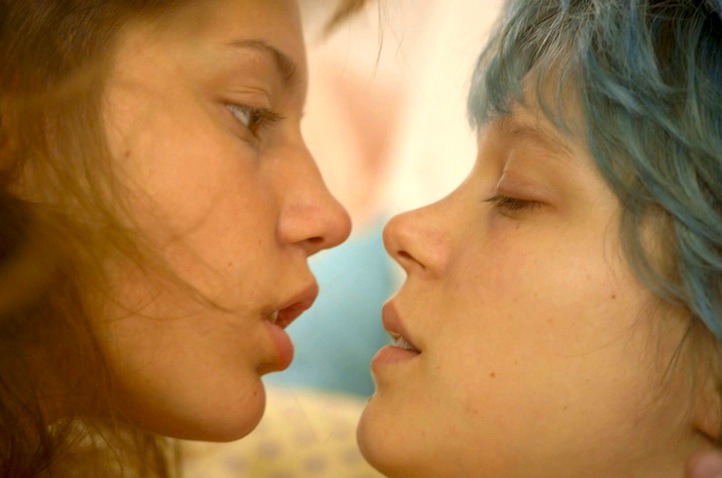
Directed by Abdellatif Kechiche, “Blue is the Warmest Color” is a Palme d’Or-winning French coming-of-age romantic drama. It revolves around Adele (Adèle Exarchopoulos), who, at the brink of adulthood, has a life-altering experience when an older woman (Léa Seydoux) enters her life. The film traces the course of their relationship from Adele’s high school years to her early adulthood when she begins her career as a schoolteacher.
When Adele sees a blue-haired woman on the street one day, their eyes meet and she is inexplicably attracted to her. Left disoriented after they pass each other, Adele is even more perturbed when she has a vivid sexual fantasy about the woman. Furthering her confusion, she is left dissatisfied after she has sex with her boyfriend and finds herself being kissed by one of her female friends.
Sensing her distress, Adele’s gay friend takes her to a gay bar where she meets fine arts student Emma, the blue-haired woman she had seen earlier. A passionate romance ensues, and through the relationship, we observe Adele as she experiences desire, insecurity, love, loneliness, and eventually, loss.
Infamous for its raw depiction of sexuality, the film’s several explicit sex scenes are mostly between Adele and Emma. One of them is a gasping seven-minute long scene. I, personally, felt saturated after watching it and found the following sex scenes to be unnecessary and tiresome. Nevertheless, I doubt anyone would remain unaffected by them. The camera stays so close to Adele’s body that we seem to sense the sensations she experiences.
The subjective experience conveyed to us by the close camera work extends to us beyond Adele’s sex life. She is a sensual person with great appetites, and her voracity is reflected in almost everything that she does – whether it’s the unabashed way she eats, passionately makes love, loses herself to the sensual beats of music she hears, or seems to soak up the calm of water.
The camera, and the superbly observed details, make us vicariously experience Adele’s wholesome sensual life. As Roger Ebert wrote in his review, “Kechiche has a sense of rapture that extends to all the human senses.”
Author Bio: Debasmita Phukan is a lifelong student of the human mind. With a degree in clinical psychology, she now continues her education through movies, books and the world around her.